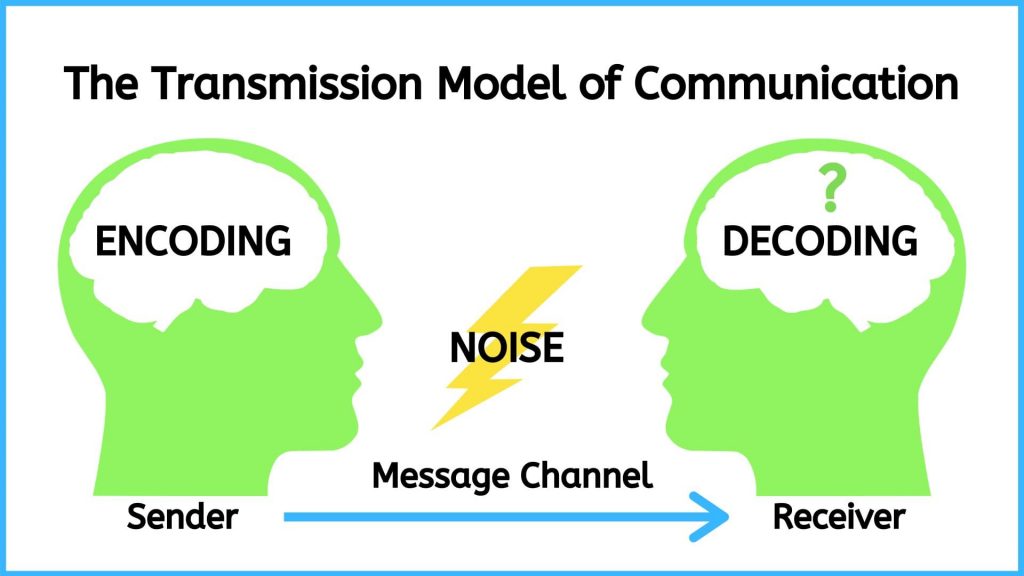Chapter 1 – Introduction to Communication and Communication Theory in Nursing
Transmission Model of Communication
The Transmission Model of communication (see Figure 1.2) describes communication as a linear, one-way process in which a sender intentionally transmits a message to a receiver (Ellis & McClintock, 1990). This model focuses on the sender and the message within a communication encounter. Although the receiver is included in the model, this role is viewed as more of a target or end point rather than part of an ongoing process. In this case, one presumes that the receiver either successfully receives and understands the message or does not. As such, this model is not representative of effective communication for how messages are received.

Figure 1.2: The Transmission Model of Communication
Because this model is sender- and message-focused, responsibility is put on the sender to help ensure the message is successfully conveyed. This model emphasizes clarity and effectiveness, but it also acknowledges that there are barriers to effectively sending communication. Noise is anything that interferes with a message being sent between participants in a communication encounter. Even if a speaker sends a clear message, noise may interfere with a message being accurately received and decoded. The Transmission Model of communication accounts for environmental and semantic noise.
- Environmental noise is any physical noise present in a communication encounter. Other people talking in a crowded hallway could interfere with your ability to transmit a message and have it successfully decoded.
- Semantic noise refers to an interference that occurs in the encoding and decoding process resulting in different interpretations of what is being communicated (e.g., lack of understanding, clarity, and confusion of words and meanings). To use a technical example, a nurse may tell the client that they should progress their walking time to 60 minutes a day. However, the client’s interpretation of this could be influenced by uncertainty surrounding how fast to walk, how quickly to progress to 60 minutes per day, and whether these 60 minutes should occur all at the same time.
Nursing Example
A client is seeking care for a suspected urinary tract infection. A nurse communicates to a client that they need to provide a urine sample and fully empty their bladder. The nurse speaks quietly in an attempt to maintain confidentiality because the client is sitting near a waiting room full of people. The client provides a urine sample but does not follow the proper technique for collecting the sample.
Analysis: In this case, the message was successfully sent to the client as evidenced by the client’s action and response to the request. The interference of environmental noise (nurse speaking softly) and semantic noise (nurse not providing complete instructions) affected how the message was decoded and ultimately the accuracy of the urine sample results.
Pros: This model spotlights the sender and the possible noise that can affect the transmission of communication.
Cons: This model is limited because it privileges how the sender communicates, with little attention paid to how the message is received. It is also limited in terms of the message, because it simply evaluates whether or not the message was delivered. The example above illuminates how detail and nuance should be attended to when communicating.
Activity: Check Your Understanding
In Figure 1.3, click on any features that represent environmental noise.
Figure 1.3: Elements of environmental noise.
Attribution Statement
With the exception of the nursing example, content was adapted from (with editorial changes):
Communication in the Real World: An Introduction to Communication Studies by University of Minnesota. Licensed under a Creative Commons Attribution-NonCommercial-ShareAlike 4.0 International License, except where otherwise noted.

